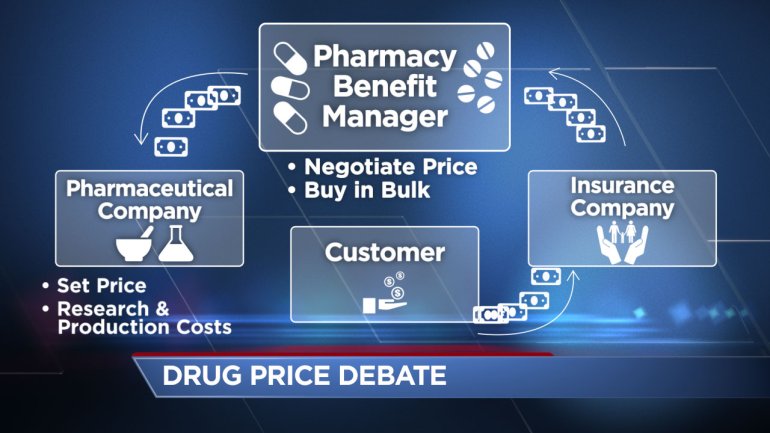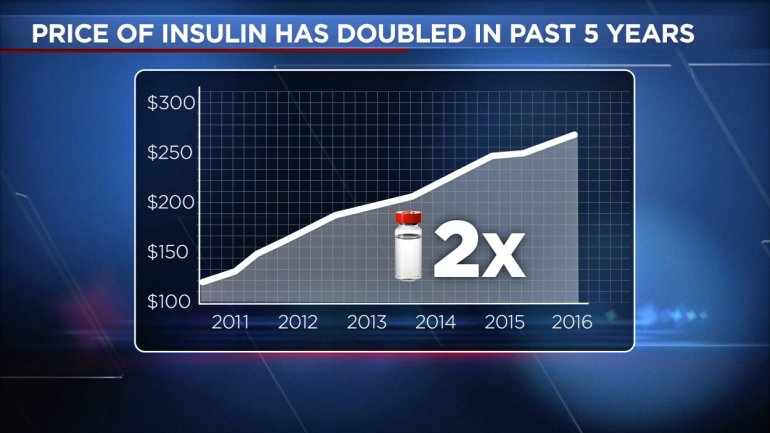DENVER — Drug spending in the U.S. increased by 20 percent from 2013 to 2015, according to a study published by the American Medical Association.
Last year, Americans saw egregious examples of price increases, including the cost of an Epipen.
Now, millions of diabetics, members of Congress and the Diabetes Association are calling for hearings to investigate why the cost of insulin continues to rise.
Scott Hovarter tests his blood sugar several times a day.
“I use ten vials every 90 days that’s $3,000. That’s $12,000 just to stay alive,” Hovarter said.
The insulin-dependent diabetic wears a pump that delivers insulin throughout the day. Even though he has insurance, it hasn’t shielded him from the price increases.
“The customer has no voice because they have no choice and that is the part that is disjointed because this is not the place for them to say. They don’t have a choice. They have to have it to survive. The insurance company will pay so let’s jack the price through the roof,” Hovarter said.
Martin Herter also relies on insulin.
“I give myself a shot once a day at bedtime,” Herter said.
The 74-year-old is on Medicare, but that only pays a percentage.
“Last September, it cost me approximately $700 out of my pocket plus you have other drugs,” Herter said.
Dr. Leonard Zemel, an endocrinologist who has practiced for 35 years, said raising the price is called making money off of a diseased state. Zemel believes there is plenty of blame to go around for the continued rise in drug costs.
“There’s a blame game between the people in the chain of the production of insulin and how it gets to the patients who end up using it,” Zemel said.

The pharmaceutical companies say they set prices according to research and production costs.
Pharmacy benefit managers negotiate the price on behalf of insurance companies. PMBs buy in bulk, negotiate prices and decide which drugs insurance companies will cover. Critics of PMBs call them middle men that add costs.
Insurance companies decide how much cost to pass on to consumers.
Healthpocket, a website that compares insurance plans, says co-pays and fees for drugs have increased an average of 34 percent in 2016.
“I think we need to raise the awareness of exactly what goes into the production of a product, a medical product, and from there reaching the patient,” Hovarter said.

A comparison of the costs of two popular types of insulin, humalog and lantus have doubled in price in the past five years.
Congresswoman Diana DeGette [D-Denver] said she would push again for hearings on drug costs.
“I think we need to raise the awareness of exactly what goes into the production of a product, a medical product, and from there reaching the patient,” DeGette said.
DeGette and other Democrats want answers.
“The pharm companies will tell you we have more complex insulin, we have an insulin that does a better job and so on. And, that’s wonderful for diabetics, but not if they can’t afford it,” DeGette said.
The American Diabetes Association launched a petition drive calling for access to affordable insulin and has collected 190,000 signatures. But, changes can’t happen quickly enough for people who depend on insulin to keep them alive.
“Something needs to be done and it comes down to the moral conscious of the companies involved. Make your money somewhere else,” Hovarter said.
A federal lawsuit accused the three insulin makers of collusion which the drug makers deny.
European countries and countries around the world have regulated the cost of drugs. One of the biggest drug manufactures, Eli Lilly, recognizes that.
“We acknowledge that the complex reimbursement designs in the U.S. place an unfair burden on people with diabetes and we have expressed our commitment to exploring solutions to this issue,” the company said in a statement.
President Donald Trump promised to fight drug companies, saying he would lobby to let the government negotiate drug prices for Medicaid and Medicare. But after a meeting with leaders of pharmacy companies, the president backed away from that stance.